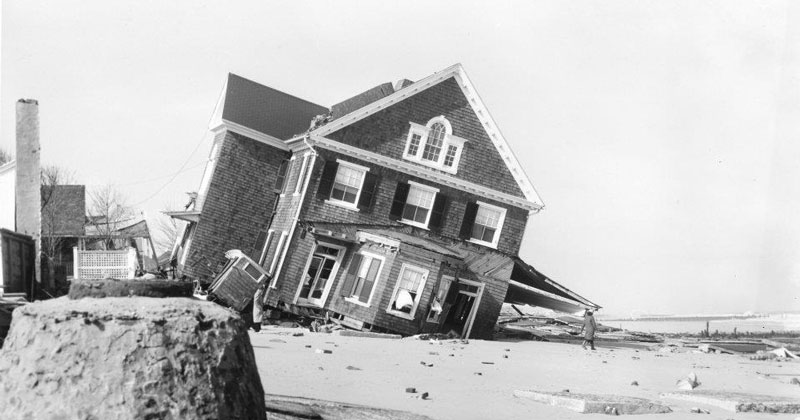


Severe Weather Awareness Week
Photos courtesy of the Delaware Public Archives February 28, 2022
UD experts work with state and federal agencies to educate Delawareans
“We face almost every weather hazard that you can imagine,” said Jeff Sands, community relations coordinator for the Delaware Emergency Management Agency (DEMA), one of the organizers of Severe Weather Awareness Week from Feb. 28 to March 4. “With a changing climate, we face more frequent and more dangerous weather events than ever before. Awareness of the hazards is an integral part of staying safe. So we are highlighting some of the main weather hazards that Delawareans face to help people better prepare.”
To help educate the state’s residents in what they could face and how to prepare, DEMA is working with the National Weather Service and two programs at the University of Delaware’s College of Earth, Ocean and Environment (CEOE): the Center for Environmental Monitoring and Analysis (CEMA) and the Delaware Sea Grant College Program (DESG).
This Thursday night, March 3, DESG is hosting an online workshop as the central event of the week. During the workshop, experts from DESG, DEMA and CEMA will share the history of severe weather in Delaware, prospects for a future with increasing risk, and ways communities and individuals can prepare. The event is free, but registration is required at deseagrant.org/stormof62.
The evening will start at 7 p.m. with a presentation by CEMA Director and State Climatologist Dan Leathers, a professor in CEOE’s Department of Geography and Spatial Sciences. Leathers will share the history of the Storm of ’62, the meteorological conditions that made it possible, and connect that famous instance of severe weather with more recent examples from around the state.
“Many believe that tropical systems cause the most damage along Delaware’s coasts. However, mid-latitude cyclones (nor’easters) can be just as damaging, and they are much more frequent,” Leathers said. “The frequency of coastal storms in the Mid-Atlantic region peak in the spring, with the most occurring in March, just as the ’62 storm did. Nor’easters, like the ’62 storm, can bring severe coastal flooding, high winds, heavy rain, and in the winter, heavy snow, to Delaware. While the storm of ’62 was unique in some ways, a nor’easter like this will undoubtedly impact the Delmarva again.”

After Leathers’ talk, Danielle Swallow, coastal hazards specialist at DESG, will speak on what changing conditions in both the natural and built environments could mean for future impacts from severe weather. She will also share some things communities can do to improve their resilience to severe weather. (Following federal definitions of coastal lands, all of Delaware’s counties are considered coastal and face at least some of the same issues, foremost among them the threat of flooding.)
“Severe weather can strike any time of the year and in different parts of the state. According to the State of Delaware’s Hazard Mitigation Plan, the top hazard across all counties are floods. Flooding can be caused by excess rainfall, high tides, storm surge and wind pushing water ashore. But it is important to note we also have vulnerabilities to wind, tornadoes, erosion, winter precipitation, drought and extreme temperatures,” Swallow said. “I think it is critically important to take steps now to bolster preparedness, instead of when severe weather is upon us.”
The event will conclude with a panel discussion about how to prepare as individuals. The discussion will be led by DEMA’s Sands and include local first responders and emergency managers. Sands expects they will address how people can make emergency plans and emergency kits, as well as ways for them to stay informed. The audience will have opportunities to ask their own questions after the presentations.
“Commemorating storms of record like the Storm of ’62 can be a good opportunity for us to take stock and compare those events against present and future conditions,” Swallow said. “Our climate is changing. Together with population and land use changes, storms of the past are not necessarily a predictor of future impacts. We must look at past, present, and future conditions to get a comprehensive picture of risk.”
Contact Us
Have a UDaily story idea?
Contact us at ocm@udel.edu
Members of the press
Contact us at mediarelations@udel.edu or visit the Media Relations website

